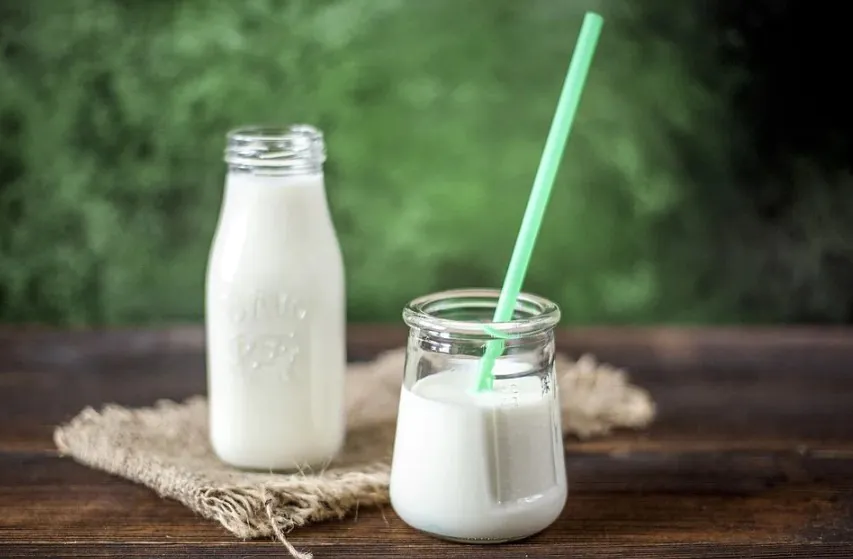The global dairy industry is growing with a strong and steady pace, while the world’s top 10 largest milk producing countries are some of the biggest contributors to the global dairy industry production, revenue, and trade over the decades. Many countries around the world have a long tradition of milk production and milk with milk products have an important role in the diet. With the global demand of dairy products continues to grow, especially in developing countries, the world’s largest milk producing countries, top milk exporters and milk importers are expected to further increase the value and volume of their dairy sectors, driving the global dairy market growth over the near future.
This industry fact sheet is to assist industry professionals, investors, and people in general that are interested in gaining insights into the global dairy industry including:
- How much is the global dairy industry worth?
- What is the milk production in the world 2019?
- Which country is the largest producer of milk in 2020?
- What is the rank of India in global milk production?
- Who the is the largest milk exporter in 2020?
- What is the global dairy milk market outlook in 2020?
Bizvibe’s smart B2B marketplace solutions help buyers and suppliers in the global dairy industry to find and connect with each other, shorten sourcing and purchasing cycles, and maximise profit growth. Join today to see how BizVibe can help your business grow!
What is Dairy Industry?
The global dairy industry is one of the most important sectors in the global agriculture industry that deals with the production and processing of animal milk from some common livestock such as cow sheep, goat, buffalo, and camel. The milk obtained from these animals can be consumed directly and processed into various of dairy products such as cheese, butter, cream, yogurt and curdled milk. Dairy products can offer various nutrients such as calcium, proteins, zinc, magnesium, and vitamin D and B12, therefore play an important role the human diet around the world. With rising demand for dairy products and their proactive function in the global food industry, dairy industry is also an essential part in the growth of the economies worldwide.
Top Figures and Facts in the Global Dairy Industry
- The global dairy market size was valued at US$ 673.8 Billion in 2018, and it is expected to reach a value of US$ 1032.7 Billion by 2024, registering a CAGR of around 8% during 2019-2024.
- In the last three decades, world milk production has increased by more than 60%, from 530 million tonnes in 1988 to 852 million tonnes in 2019.
- India is the world’s largest milk producer, with 22% of global production, followed by the United States of America, Pakistan, Brazil and China.
- Since the 1970s, most of the expansion in milk production has been in South Asia, which is the main driver of milk production growth in the developing world.
- Milk production in Africa is growing more slowly than in other developing regions, because of poverty and – in some countries – adverse climatic conditions.
- The countries with the highest milk surpluses are New Zealand, the United States of America, Germany, France, Australia and Ireland.
- The countries with the highest milk deficits are China, Italy, the Russian Federation, Mexico, Algeria and Indonesia.
- Increasing demand for dairy products is driven by the growing population, higher income levels, and rising health consciousness. The global market is primarily dominated by the milk segment, followed by butter and cheese segments. The yogurt and dairy desserts segments are expected to be the fastest-growing segments across the world.
Suggested Reading: Global Sheep Farming Industry: Top Lamb Producers, Largest Lamb Exporters and Importers 2020
Top 10 Largest Milk Producing Countries 2020
| Rank | Country | 2019 Production (million tonnes) |
| 1 | India | 196.18 |
| 2 | US | 99.16 |
| 3 | Pakistan | 47.30 |
| 4 | Brazil | 35.17 |
| 5 | China | 32.67 |
| 6 | Russia | 31.16 |
| 7 | Germany | 31.10 |
| 8 | France | 25.01 |
| 9 | New Zealand | 21.79 |
| 10 | Turkey | 21.53 |
Source: FAO
According the to the latest report from FAO, the global milk production in 2019 reached 852 million tonnes, an increase of 1.4% from 2018, mainly resulting from production increases in India, Pakistan, Brazil, the European Union, the Russian Federation and the United States of America, partially offset by declines in Australia, Turkey, Colombia, Argentina and Ukraine. Across the key global regions, Asia registered the largest expansion, followed by Europe, North America, South America, Africa, Central America and the Caribbean, but declined in Oceania.
India is the world’s largest milk producing country, representing over 22% of the world’s total milk production annually. The Indian dairy industry is highly fragmented, with an estimated 70 million small-scale farmers handling only a few cattle and buffalo each. Dairy is a key staple of Indian cuisine, and consumption of fresh dairy products is expected to increase by 2.3% a year, reaching 108kg/capita in 2028, according to the FAO. In 2020, India’s milk production is expected to increase further driven by rising demand for processed food stemming from fast growing urbanization. Production growth is also facilitated by rising milk collection and processing, especially by dairy co-operatives, along with rising output of relatively more organized sector.
Suggested Reading: Top Beef Producing Countries, Top Beef Exporters & Importers: Global Cattle Industry Factsheet 2020
China has long been another one of the world’s largest milk producing countries. FAO reports that China’s milk output increased further in 2019, following a rebound already in 2018. Recent expansion in milk output resulted from increased efficiency of large-scale dairy farms and the use of concentrated feed. The process of farm consolidation continued, including the relocation of farms away from waterways and away from urban centres, induced by regulations implemented to control damage to the environment.
Top 10 Milk Exporting Countries
| Rank | Country | 2019 Export Value (US$ billion) |
| 1 | New Zealand | 5.5 |
| 2 | Germany | 2.8 |
| 3 | Netherlands | 2.5 |
| 4 | Belgium | 1.7 |
| 5 | US | 1.6 |
| 6 | France | 1.5 |
| 7 | Australia | 0.91 |
| 8 | UAE | 0.81 |
| 9 | UK | 0.79 |
| 10 | Poland | 0.79 |
Source: International Trade Centre
The global milk exports reached 76.7 million tonnes in terms of volume, according to FAO, an increase of 1.0 percent from 2018, representing a relatively modest growth compared to 3.2 percent expansion registered in 2018. The share of global trade in milk production remained under 10 percent, as exports constitute a small proportion of production in some of the milk producing countries, including India and Pakistan.
As one of the world’s top 10 largest milk producing countries, New Zealand is also the world largest milk exporting country for years. Dairy industry in New Zealand plays a vital role in the country’s economic growth and foreign exchange earnings. New Zealand has the world’s highest level of dairy self-sufficiency, due to favorable natural conditions for dairy production, and a small population. There are currently more dairy cows than people in New Zealand. According to the Dairy Companies Association of New Zealand, New Zealand exports 95% of its milk production each year. Dairy accounts for one in every three dollars earned by New Zealand for exporting goods, and approximately 20% of New Zealand’s total goods and services export earnings today.
Top 10 Milk Importing Countries
| Rank | Country | 2019 Import Value (US$ billion) |
| 1 | China | 5.0 |
| 2 | Germany | 1.8 |
| 3 | Belgium | 1.4 |
| 4 | Netherlands | 1.3 |
| 5 | Italy | 1.1 |
| 6 | Algeria | 1.1 |
| 7 | France | 0.91 |
| 8 | Mexico | 0.75 |
| 9 | Indonesia | 0.53 |
| 10 | Malaysia | 0.52 |
Source: International Trade Centre
In 2019, the global milk imports totalled 76.62 million tonnes, representing a 0.7% growth from 2018. China, the Russian Federation, the Philippines and Indonesia reported the largest increases in imports, but offset partially by declines in Algeria, United Arab Emirates, Iraq and Viet Nam, among others. New Zealand, the European Union, Turkey, Egypt and Belarus supplied much of the increased global demand, while the United States of America, Mexico, Australia and Argentina exported less in 2019.
China’s is not only one of the world’s top 10 largest milk producing countries, but also the largest importer for milk and other dairy products in the world. The per capita consumption of dairy products in China keeps soaring rapidly over the past decade, mainly driven by the growth of China’s economy and the rise in Chinese people’s living standards. According to China Customs, in 2018, the import volume of milk and dairy products in China reached 2.74 million tons, up by 7.80% YOY; the import value reached USD 10.65 billion, up by 14.80% YOY, the researcher concludes. The dairy products imported to China mainly include milk powder, liquid milk, cheese, etc., with milk powder taking the major share.
Future Trends of Global Dairy Industry
One of the major dairy market trends that has been seen is that consumers around the world are gradually shifting to the dairy products with low levels of lactose and sugar mainly due to the raising heath concerns. There is a significant increase in the sales of lactose-free dairy products. Products with less lactose content and lactose-free dairy products, such as yogurt, milk, and cheese, are gaining traction in the market over the recent years. It is expected that the lactose-free dairy segment is to grow with a CAGR of 7% over the next five years.
Suggested Reading: Top Pork Producing Countries, Top Pork Exporters & Importers: Global Pork Industry Factsheet 2020
Join BizVibe, and discover thousands of world’s leading milk and dairy products suppliers and buyers today!



